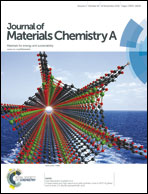High-efficiency solid-state polymer electrolyte dye-sensitized solar cells with a bi-functional porous layer†
Abstract
A simple and effective method to increase the energy conversion efficiency is proposed and demonstrated by increasing the ion flux with a reduction in the thickness of solid polymer electrolyte layers and the mass transport distance of I−/I3− redox couples. Solid-state dye-sensitized solar cells employing a polymer electrolyte and a bifunctional insulating layer show a power conversion efficiency of 8.9% under 1 sun conditions.


 Please wait while we load your content...
Please wait while we load your content...